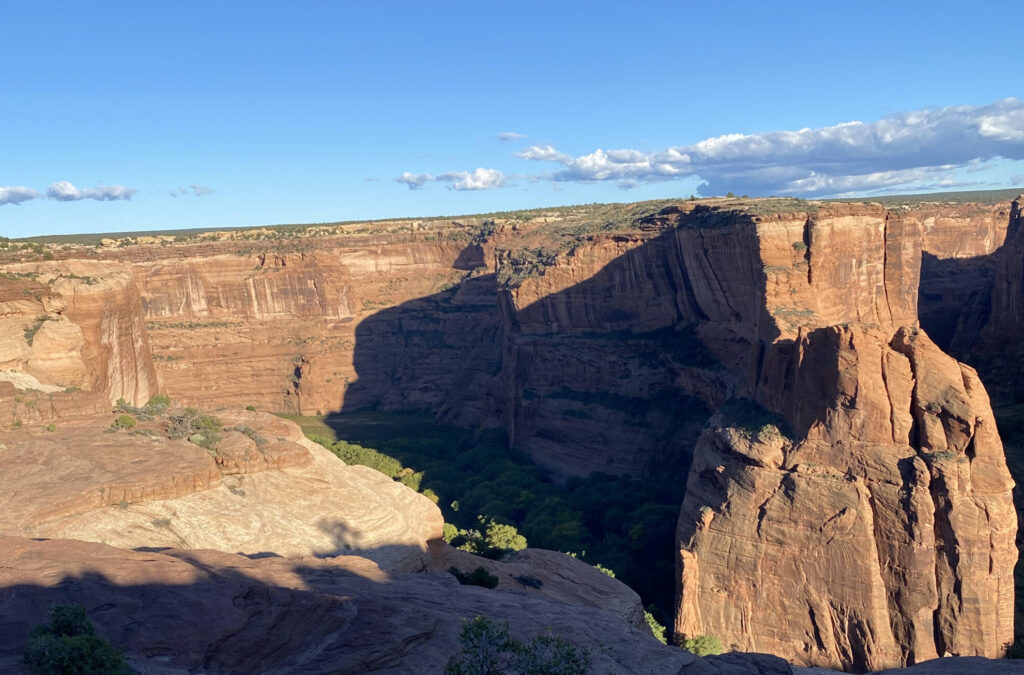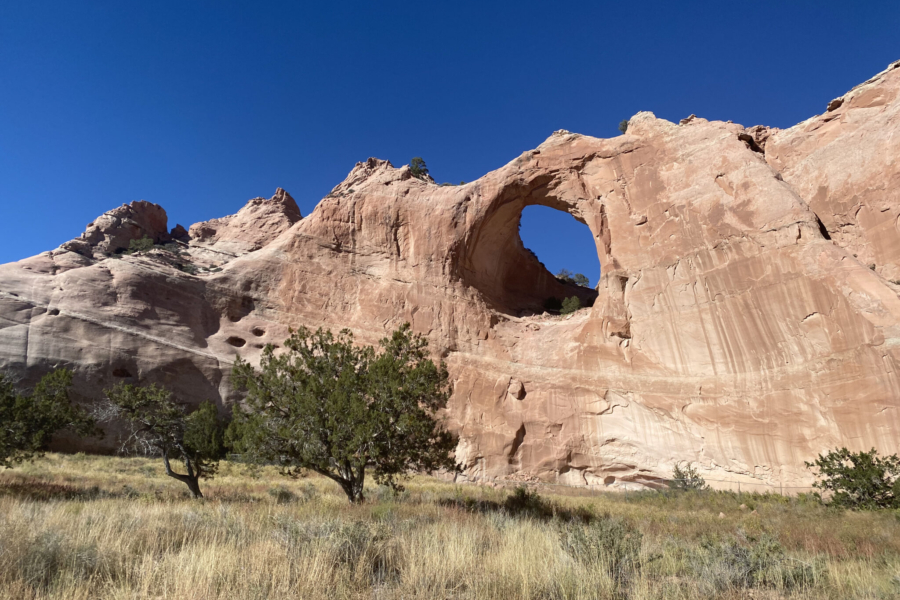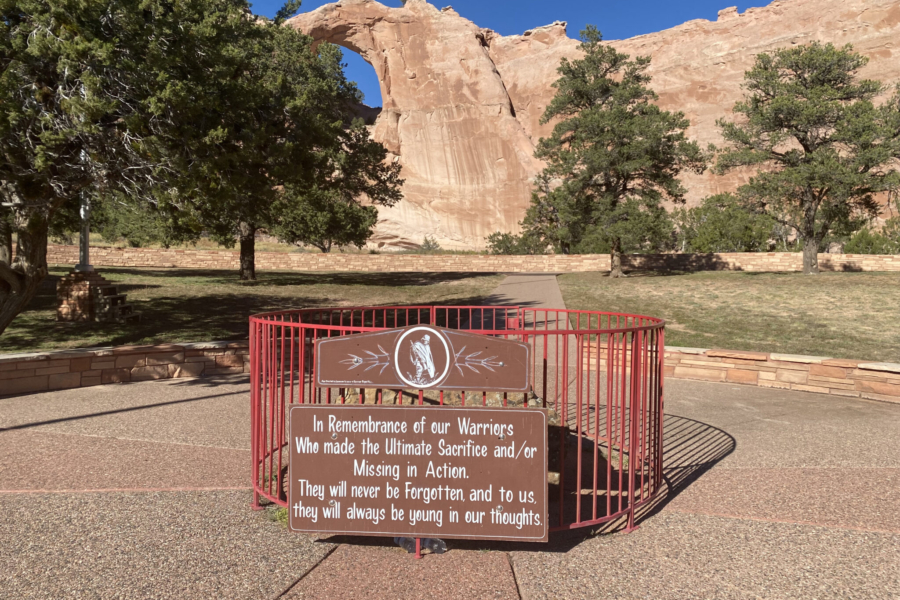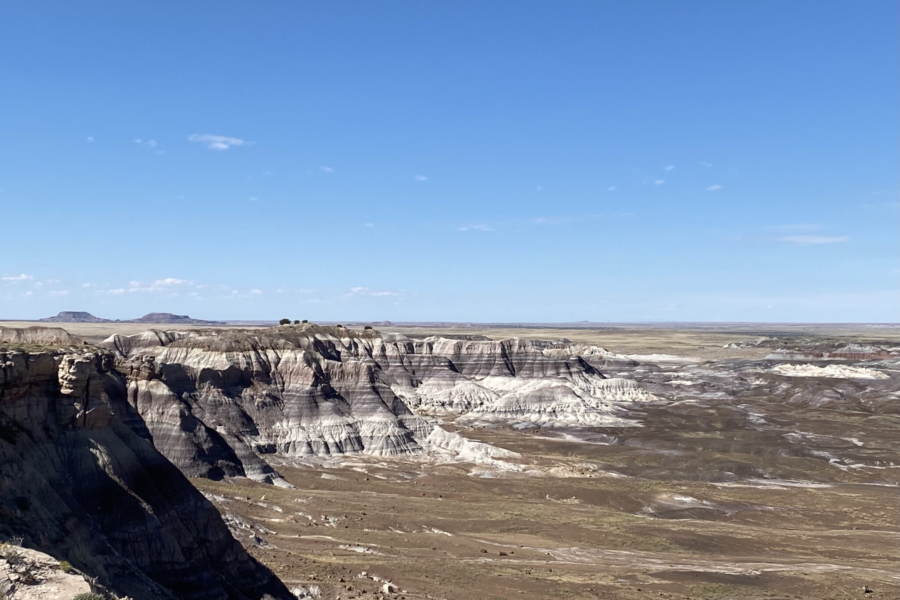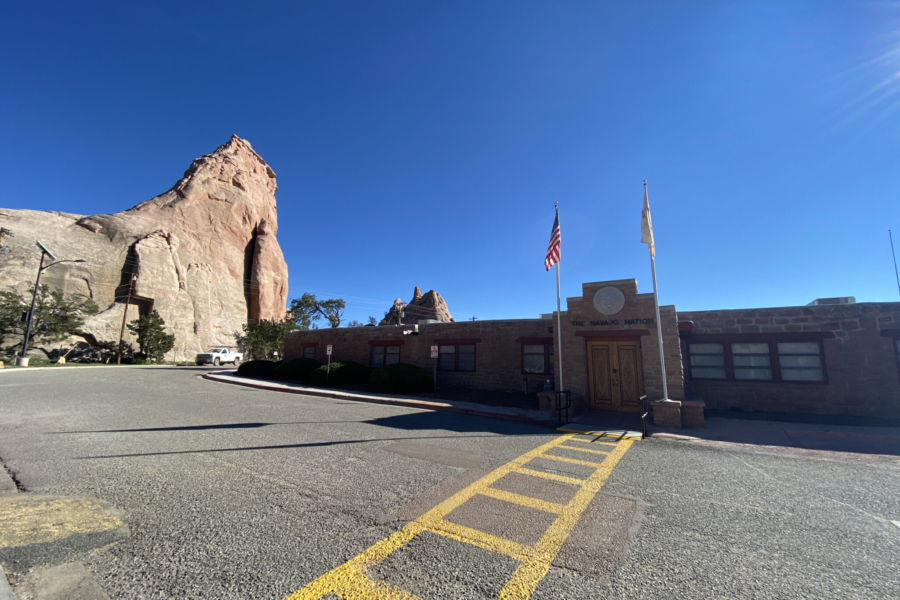Last fall, our Director of U.S. Programs, Renée Kube, and our U.S. Sponsorship Specialist, Kristen Walthall, had the chance to return to Arizona for the first time since the COVID-19 pandemic to visit our affiliated sites and meet with our volunteer coordinators. Today, as a part of our Stories of Hope series, we hear from Renée about the history of Navajo Nation and the effects of the pandemic on this already vulnerable population.
“The families are trying to hold on to their way of life while developing their capacity to earn their livelihoods and facing the challenges of poverty.”
About Navajo Nation
“The Navajo Nation is a semi-autonomous territory that includes portions of Arizona, New Mexico, and Utah, and shares a border with Colorado. The community of Teec Nos Pos is close to the Four Corners National Monument and Navajo Tribal Park. It contains the quadripoint where those four states come together, the only place in the U.S. where that occurs. The Hopi Reservation is completely enclosed by the Navajo Reservation,” explains Renée.
“The largest towns and small cities within Navajo Nation (in order of size and population) are Tuba City, Arizona; Shiprock, New Mexico; Chinle, Arizona; Kayenta, Arizona; Fort Defiance, Arizona; Window Rock, Arizona (the capital); and its bordering community, St. Michaels, Arizona. Children Incorporated has affiliated sites in Tuba City, Kayenta, and St. Michaels, as well as in many of the smaller communities.”
“There are larger cities just outside the border of Navajo Nation, and these are important places for shopping for groceries and supplies; for medical care that falls beyond the scope of the Indian Health Service Clinics; and for job opportunities for those who choose to live outside the reservation. Two of these cities are in Arizona: Flagstaff to the south and Page to the north. Children Incorporated has affiliations in Page,” said Renée.
“However, many Navajo people choose not to live in either the larger cities or the towns. Instead, they prefer hozho naasha, which means ‘to walk in beauty,’ expressed by being in balance with and closely interconnected with the natural world, living in very small communities, and finding happiness and joy in daily life skills, ceremonies, and events. For traditional Navajos, such things might include living in a hogan (or having one nearby for ceremonial use), growing traditional crops (especially corn for its food and sacred pollen), herding sheep (for its meat and wool), and attending ceremonial events like a kinaalda (puberty ceremony), nidaa (enemy way), ye’ii bicheii (a healing ceremony), and more. It is considered important to understand hozho so that one can use it to guide choices and decisions throughout one’s life.”
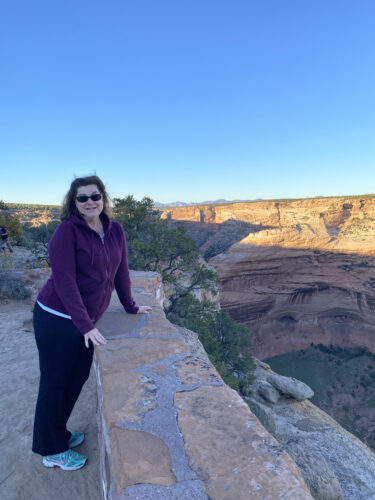
Renée is pictured in one of the many amazing national parks in Arizona.
“Traditional Navajos believe that at birth one starts the Corn Pollen Path of Life. One aspires to reach 102 years of age, the culmination of a long, happy, and fruitful life, and to be in good condition and in balance with everything. Within the path of life, they wish to have and maintain beauty and balance within family, home, livelihood, kinship, community, Navajo Nation, and the world outside. Wherever one goes, one is to live by the teachings, to find good things out there, and to bring them home,” explains Renée.
Understand the people
“The Navajo tribe call themselves Diné, which literally means ‘The People.’ Traditional Navajo believe it is imperative to go back to the true essence of hozho and to instill it back into the lives of Diné children and youth. They believe that their youth feel a yearning for more knowledge of Navajo language and culture, which will help them to feel pride and to help them make moral decisions.”
“The reservation’s landscape is full of beauty and variety; it is ever changing. The families are trying to hold on to their way of life while developing their capacity to earn their livelihoods and facing the challenges of poverty. The pandemic has dealt a terrible blow to these efforts,” said Renée.
The detrimental effects of the pandemic
“Covid-19 was and still is contracted at disproportionate rates on Navajo Nation as compared to the rest of the country. This is due to the historic marginalization of its people. There has been long standing neglect by government entities when it comes to basic infrastructure to support Native populations. The conditions in which people are born, live, learn, and work are known as the social determinants of health. When those are inadequate, then there are negative effects on people’s physical and mental health. It has been documented extensively that low quality jobs, limited income, poverty, and low education are fundamentally connected to poor health outcomes.”
“Within Navajo Nation, 35.8% of households are below the federal poverty threshold, and most hover at or barely above it. (This is compared to 12% at the national level.) Federal funding for health care has been inadequate and has not kept pace with rising costs of prescription drugs, specialized healthcare, and competitive salaries to attract health professionals. Life expectancy is lower for Navajo Nation as compared to the rest of the country. There are higher rates of heart disease, substance abuse, diabetes, and obesity,” said Renée.
“With the return of not only students, but the entire administration, faculty, and staff, assessments can now be better made on the negative impacts of the pandemic on student population and enrollment.”
“These pre-existing conditions made people more vulnerable to contracting the coronavirus, and to experiencing serious illness and death. Access to basic health services presents challenges for most of Navajo Nation, due to the remoteness of rural areas where families live. Lack of family transportation and/or cost of fuel are often factors that impede access to health care.”
“Navajo Nation enforced some of the most extreme social distancing measures in the country. It enacted 57-hour weekend lockdowns during the height of the pandemic and closed even essential businesses such as gas stations,” said Renée.
“When schools across the U.S. closed abruptly in March 2020 in an effort to slow the spread of Covid-19, there were immediate challenges for continuing the children’s education. Many districts across the country already had technology infrastructure, and students had school-issued electronic devices. That was not the case on Navajo Nation.”
“The remainder of the 2019-2020 school year was a scramble to make paper packets for the littlest students and to try and get electronic devices into the hands of the older students. This resulted in sibling groups walking for distances to find hills that might have a cellular signal; families driving to towns where they could go to parking lots and surf off merchants’ Wi-Fi signals; and even school buses becoming Wi-Fi hotspots where families would drive to predetermined places so they could take their children to the buses to upload their work and download their new assignments,” said Renée.
“Navajo Nation President, Jonathan Nez, said the reservation is a telecommunications desert, but it is a desert that is ready to bloom. There has been a big push to build and expand the network, but there’s a long way to go.”
“The 2020-2021 school year began as more of the same. Some Navajo Nation school districts were able to implement hybrid instruction with increased school-based health measures. In these, children were divided, with half going to the schools for in-person instruction for two days, then the other half going for two days, with one day reserved for deep-cleaning, parent conferences, and/or food preparation and distribution. But many remote districts were not able to implement hybrid instruction. Instead, they remained on fully-virtual instruction, which has many deficits for students. The children missed the face-to-face encounters with caring administration, faculty, and staff. They missed opportunities for in-person classroom discussions and hands-on learning in small groups. They missed athletics, clubs, and other activities. Furthermore, in many communities, schools are also the hub for needed supports such as school meals, counseling, and before-and-after-school childcare,” said Renée.
“Thankfully, the development of a vaccine and its trial in December 2020, followed by a rollout to the public over the spring of 2021, was a huge help. As the school year ended in May 2021, more families were getting the vaccine. Infection rates began to drop.”
New hope in a new school year
“The 2021-2022 school year saw the development of boosters and a big push to return to fully in-person instruction. All public health measures were followed, and Navajo Nation displayed an online Covid Dashboard to show the rise, drop, and autumn/winter surges of infection rates. Just like everywhere else, people developed ‘Covid fatigue.’ People found it increasingly difficult and depressing to stay at home for so long,” said Renée.
“The 2022-2023 school year is seeing a further return to normal. In most places, schools have fully reopened to in-person learning, and athletics, clubs, and activities have resumed. The Navajo Nation Fairs returned. However, on the reservation, caution is still the byword. Masking and social distancing are still observed. With the return of not only students, but the entire administration, faculty, and staff, assessments can now be better made on the negative impacts of the pandemic on student population and enrollment. The smaller and more rural schools have lost a large percentage of children, as their families migrated to other towns in search of work, health clinics, and schools that could offer more opportunities for their children. The viability of some of these schools is in question, and a few of these are affiliated with our organization.”
***
How do I sponsor a child with Children Incorporated?
You can sponsor a child one of three ways: call our office at 1-800-538-5381 and speak with one of our staff members; email us at sponsorship@children-inc.org; or go online to our sponsorship portal, create an account, and search for a child that is available for sponsorship.

